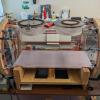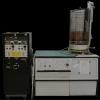Equipment
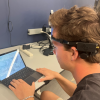 We have a number of GVS devices utilized for various research purposes. The GVS devices provide small currents (< 4 mA) to the inner ear, which can modulate both semicircular canal and otolith organ afferents. Some practical applications for this
We have a number of GVS devices utilized for various research purposes. The GVS devices provide small currents (< 4 mA) to the inner ear, which can modulate both semicircular canal and otolith organ afferents. Some practical applications for this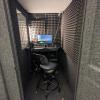 A single walled isolation chamber to suppress sounds inside and outside of the booth. This equipment is used to assess performance in tasks that are sensitive to external distractions, such as perception threshold testing. It has been used to
A single walled isolation chamber to suppress sounds inside and outside of the booth. This equipment is used to assess performance in tasks that are sensitive to external distractions, such as perception threshold testing. It has been used to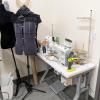 We have a manufacturing station which offers industrial grade sewing abilities (Brother CS-6000i, Juki MO-644D Serger, and Brother Z-8550A), weaving equipment, and physical models. The station has been used to create space suit components, sensor
We have a manufacturing station which offers industrial grade sewing abilities (Brother CS-6000i, Juki MO-644D Serger, and Brother Z-8550A), weaving equipment, and physical models. The station has been used to create space suit components, sensor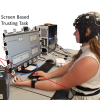 Neurophysiological monitoring is being used for a variety of projects to understand an operator's cognitive states, such as trust, workload, or situation awareness. They can also be used to understand one's performance or for health monitoring. We
Neurophysiological monitoring is being used for a variety of projects to understand an operator's cognitive states, such as trust, workload, or situation awareness. They can also be used to understand one's performance or for health monitoring. We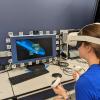 Multiple virtual reality (VR) head-mounted displays (HMDs) are utilized in the laboratory for various research purposes, such as mocking-up spaceflight habitats and performing operational tasks similar to those we expect astronauts to face.
Multiple virtual reality (VR) head-mounted displays (HMDs) are utilized in the laboratory for various research purposes, such as mocking-up spaceflight habitats and performing operational tasks similar to those we expect astronauts to face. Two spacesuit mockups based on NASA's Exploration Extravehicular Mobility Unit (xEMU) design are used in the bioastronautics focus area to simulate restrictions crewmembers face in operational environments. The suits were designed and built by the
Two spacesuit mockups based on NASA's Exploration Extravehicular Mobility Unit (xEMU) design are used in the bioastronautics focus area to simulate restrictions crewmembers face in operational environments. The suits were designed and built by the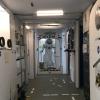 The Habitats Optimized for Missions of Exploration (HOME) mockup was designed and built by the human spaceflight graduate projects team led by former NASA astronaut Colonel Jim Voss. The graduate projects experience includes learning systems
The Habitats Optimized for Missions of Exploration (HOME) mockup was designed and built by the human spaceflight graduate projects team led by former NASA astronaut Colonel Jim Voss. The graduate projects experience includes learning systems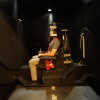 The Tilt-Translation Sled (TTS) is a device donated by the Neuroscience Laboratory of NASA Johnson Space Center. It is capable of administering motions in roll tilt, pitch tilt, X-axis translation, and Y-axis translation. Motion stimuli
The Tilt-Translation Sled (TTS) is a device donated by the Neuroscience Laboratory of NASA Johnson Space Center. It is capable of administering motions in roll tilt, pitch tilt, X-axis translation, and Y-axis translation. Motion stimuli


